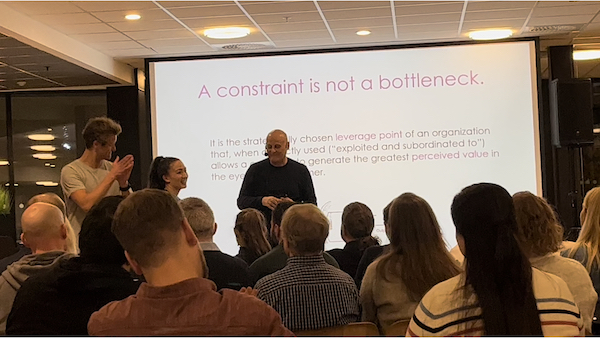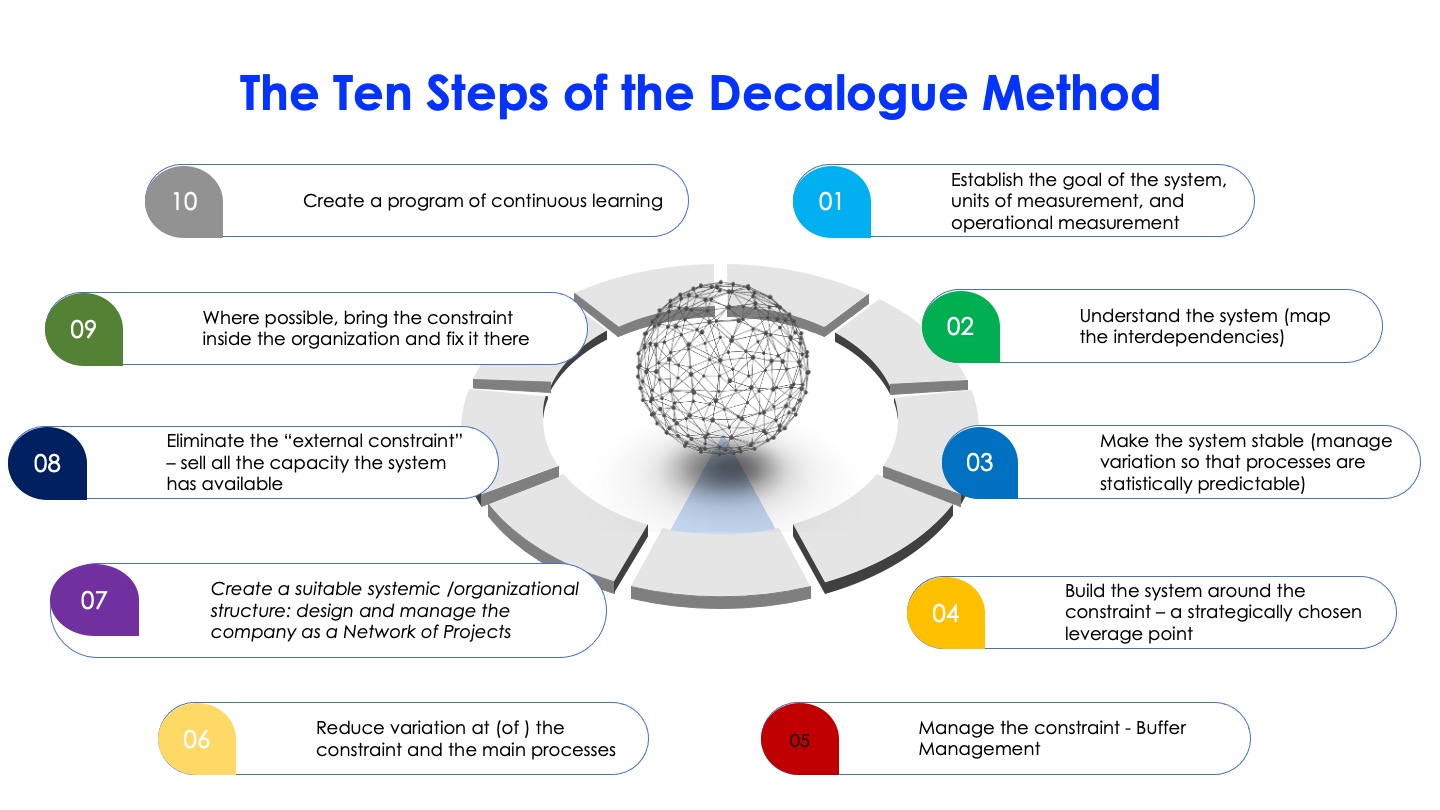
The customer is the most important link in the chain. This is what Dr. Deming used to say. Accordingly, a successful organization must have a built-in mechanism in the way it operates that allows it to understand and satisfy the needs of the customer. Having a reliable method is the most effective way to use what you have available to sell more.
We believe that the most spectacular application of the power of the Thinking Processes from the Theory of Constraints resides in addressing the market. It is called ‘External Constraint’ and it is Step 8 of the Decalogue: Step 8: Eliminate the external constraint (sell all the capacity the system has available.
What is radically different about the External Constraint approach to marketing and sales?
Like everything in Deming’s management philosophy and in the Theory of Constraints, External Constraint is a systemic approach. It always looks at the big picture. More specifically:
- External Constraint prompts us to look at the entire value network we are part of
- It’s about enabling our customer to create more benefits for their customers and sell more easily to their customers because thy solve their problems
- It prompts you to reconsider the way you approach the market and to “subordinate” to your capacity so you can articulate the value you provide
- It asks you to refocus on aspects that generate the perceived value you create and to find markets sensitive to this offer
- It integrates the activity of sales organically into the way the whole company operates (when left to behave in a traditional way, salespeople will focus on “local optima” instead of the big picture of how sales impacts all aspects of the company)
Win–Win Sales
External Constraint was first described in Dr. Goldratt’s book ‘It’s Not Luck’.
It took us considerable time and effort to extract and rebuild all the detailed knowledge about External Constraint from ‘It’s Not Luck’, and we can say that after many years of exposure to it in practice, the External Constraint protocol works incredibly effectively. It does, however, require a considerable shift in mindset on the part of the sales team. The job is no longer about “selling at” people based on pure persuasion techniques, gift of the gab, and a price list. It becomes sales as part of detailed conversation with the customer about how everybody involved can make things better in a win–win way. It requires meticulous work in order to do the following:
- Identify the market through accurate segmentation
- Establish a price based on TVC (totally variable cost) involved in delivering the product/service and the constraint time it absorbs
- Increase market awareness of the value of our offer
- Create an unrefusable offer for the client based on their Undesirable Effects and Core Conflict
- Show the advantages of cooperation to the entire chain involved
When we present an offer, no matter how good it is, we must also be aware that customers and suppliers will go through the six levels of resistance that Dr. Goldratt has identified and that we looked at in Part 11 of this series. By using the appropriate Thinking Process for each level of resistance, we can work with them in the direction of finding an agreement. (See A Systems Approach to Change: The Thinking Processes from the Theory of Constraints)
We need to SEE our customers and suppliers, the way we see a system. How can we do that? By understanding their point of view, and that means understanding their challenges (UDEs), and their legitimate needs regarding the market. Everybody has their own core conflict cloud and the more we know about it the more we understand about how we can all interact for mutual benefit.
Moreover, every time we present the customer with a new solution to an existing problem they are experiencing, what we actually do is create innovation. The essence of innovation is to remove a limitation, thus breaking through to a new and better reality and that is what the external constraint algorithm helps us to model and reproduce whenever we need to.
Using the External Constraint approach to marketing and sales entails using all the Thinking Processes from the Theory of Constraints. This requires effort and patience to learn, but it can also be an exhilarating process. By absorbing these Thinking Processes, your company absorbs a complete method for continuous innovation.

The Human Constraint
Adopting a systemic approach to how you manage and operate your company is a big decision but it is a step that enables a real leap in overall performance. A key part of this process with the Decalogue method is building correct interdependencies among people and encouraging a mindset of unity, win-win and attention to Throughput. As the company grows, it is vital to recruit the kind of people who can thrive with this culture. We’d like to mention someone who is doing a spectacular job of this at MSCP in Alberta, Canada. The company is ramping up fast with its unique systemic solution and Rachita Kulkarni is responsible for searching and bringing in the talented people to deliver the MSCP way of working.

Meetup
What a great week it was for Intelligent Management in Oslo! Special thanks to Jasmine Garry of Bouvet ASA and Markus Skallist of Favrit for organizing a special Meetup where our Founder Dr. Domenico Lepore gave a presentation ‘From Silos to System’. We are grateful to Edwin Fjeldtvedt CEO of Favrit for inviting Intelligent Management to collaborate with Favrit and for providing his input at the Meetup on his experience with our approach.

See Part 17 of this series: Why HR is So Much More than a Department

PREVIOUS POSTS IN OUR SERIES ABOUT A SYSTEMIC APPROACH TO ORG DESIGN, MANAGEMENT AND OPERATIONS:
Radically Improving Organizational Performance – A Systemic Approach to Management Part 1
Leadership for Complex Times – A Systemic Approach to Management Part 5
Working with Variation to Support Good Decision Making – A Systemic Approach Part 7
Why Your Organization’s Constraints Are the Key to Success – A Systemic Approach Part 8
Improving Flow Company Wide – A Systemic Approach Part 9
Controlling the Whole Organization through the Constraint – A Systemic Approach Part 10
End Silos and Dissatisfaction: Learn to Operate as a Network of Projects Organization – A Systemic Approach Part 12
Company Functions Are Limiting Your Organization’s Performance – A Systemic Approach Part 13
Are Companies with a Hierarchical/Functional Mindset Dinosaurs? A Systemic Approach Part 14
Shifting Your Focus from Cost to Throughput is How You Can Thrive–A Systemic Approach Part 15






Leave a Reply